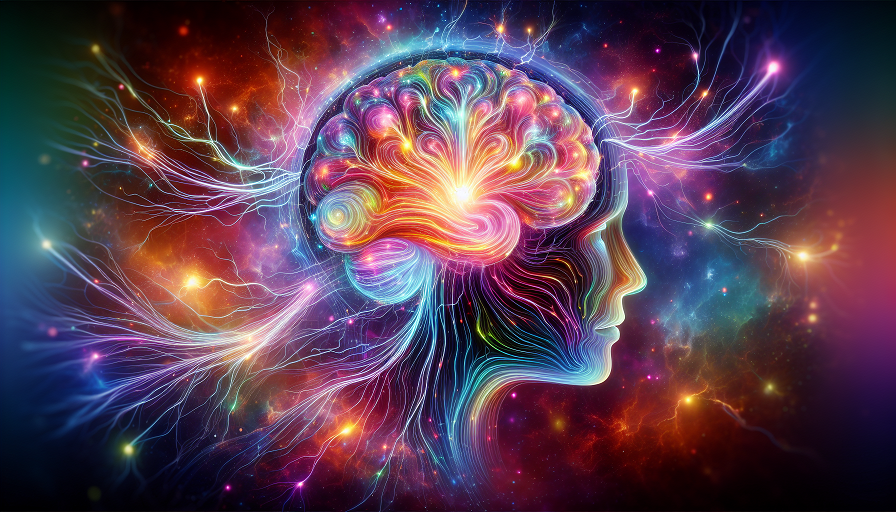
You walk into a room, give your presentation, and nail it—people applaud. Three weeks later, the details are fuzzy. But that time in seventh grade when you accidentally called the teacher ‘Mom’? Crystal clear. You can practically feel the sweat forming and hear the awkward silence echoing. Why does your brain immortalize mortifying moments, while success stories often fade like yesterday’s weather report?
It’s not just you. The tendency to vividly recall embarrassing experiences—sometimes for decades—is a universal quirk of human memory. And it’s not just annoying; it’s adaptive. Embarrassment is one of the many emotions your brain flags as important for survival. It demands attention, hijacks your focus, and stamps itself into your memory with all the subtlety of a marching band in a library.
Understanding why we remember embarrassment more than success involves unraveling how memory works, why emotions act as memory glue, and how social fear shapes our perception of ourselves. And, as we’ll see, even this uncomfortable truth has a silver lining—one that can teach us about resilience, learning, and the curious workings of the mind.
Contents
The Emotional Prioritization of Memory
Not all memories are created equal. Your brain is constantly filtering what to keep and what to discard. Most mundane events—like what you had for lunch three Thursdays ago—get dumped. But when something sparks a strong emotional response, your brain hits the “record” button.
The Amygdala’s Role
At the heart of this process is the amygdala, the almond-shaped brain region involved in processing emotions. When you experience an embarrassing situation, the amygdala kicks into gear, tagging the moment as emotionally significant. It then signals the hippocampus, the brain’s memory manager, to store the event more deeply and with greater sensory detail.
This mechanism isn’t exclusive to embarrassment—it also happens with fear, joy, love, and surprise. But embarrassment occupies a unique space in the emotional spectrum: it’s social, painful, and instructive. That combination makes it particularly sticky in the brain.
Why Not Success?
Success tends to be less surprising and less emotionally intense. Sure, it feels good, but it often lacks the urgency and discomfort that command your brain’s attention. Moreover, successful outcomes usually come after preparation—meaning your brain had time to expect them. Embarrassment, by contrast, is often unexpected and jarring, which heightens emotional encoding.
Embarrassment and Evolution: A Survival Mechanism?
While no one enjoys embarrassment, it serves a purpose. From an evolutionary standpoint, the pain of public missteps helped our ancestors avoid behaviors that could lead to social rejection—and potentially, exile from their tribes. In tight-knit communities, being accepted was critical for survival. Embarrassment is a behavioral feedback system. It hurts because it teaches.
Social Pain Mirrors Physical Pain
Neuroscientific studies have shown that social pain—like humiliation or rejection—activates the same brain regions as physical pain, including the anterior cingulate cortex. Your brain reacts to a cringe moment with the same neural urgency it might respond to a stubbed toe or burned hand. That’s why your face flushes, your heart rate spikes, and you want to disappear into the floorboards.
Because this pain is so sharp and immediate, your brain interprets the event as significant. It marks it for long-term storage, often with rich detail and persistent accessibility.
The Spotlight Effect: Why You Think It Was Worse Than It Was
Part of why embarrassing memories linger is because we think they mattered more than they actually did. This is known as the spotlight effect: the belief that others are watching and judging us far more than they actually are. Your brain magnifies your own actions and errors, making you feel like the main character in a very public, very awkward drama.
Perceived Judgment vs. Reality
In most cases, other people notice our faux pas far less than we think—and forget them quickly. But because you feel intense discomfort in the moment, your memory system logs the event as important. Ironically, others forget it while you remember it forever.
This distorted perception fuels anxiety and rumination, reinforcing the memory each time you revisit it. The more you think about an embarrassing moment, the more entrenched it becomes in your neural architecture.
Memory Consolidation and Rumination
What you remember is determined not just by what happens, but by how often you replay it. Embarrassing events lend themselves to rumination—a mental loop where you analyze, rehash, and cringe anew. Each pass through this loop strengthens neural connections around the memory, like walking a trail until it becomes a dirt path.
Neural Pathways and the “Cringe Loop”
The more you revisit a memory, the more the associated neural pathway is reinforced. In the case of embarrassment, these loops are driven by anxiety and self-criticism, which can create a feedback cycle. Successes, on the other hand, are often brushed off or downplayed—especially by those with imposter syndrome or perfectionistic tendencies.
This bias toward self-critique means your brain is less likely to replay and thus reinforce positive events—even when they’re just as meaningful.
Reframing Embarrassing Memories
While you may never fully forget those cringe-worthy moments, you can change how they affect you. The brain is highly plastic, and reinterpretation is one of its most powerful tools.
From Shame to Story
One way to soften the sting of embarrassing memories is to reframe them as stories or learning experiences. When you turn an awkward moment into a funny anecdote, you shift the emotional tone from shame to humor. This re-coding process reduces the memory’s emotional intensity over time.
Cognitive Behavioral Strategies
Techniques from CBT, like cognitive restructuring, help challenge the negative beliefs tied to embarrassment. Asking questions like, “What would I say to a friend who did this?” can create emotional distance and reduce self-judgment.
Even guided reflection or journaling can help turn emotionally charged memories into less painful recollections—much like defusing a mental landmine.
Supplements and Cognitive Support
While managing memories is largely psychological, some people find it helpful to support their cognitive processes with nutritional or herbal aids. Certain nootropic supplements are thought to enhance focus, emotional regulation, or memory clarity. Although not a magic fix, they may help you stay grounded during moments of rumination and boost mental resilience overall.
Success Deserves Better PR
So how do we retain our wins with the same clarity as our flops? It starts with intentional encoding. Success doesn’t automatically stick—it needs to be celebrated, reflected on, and shared.
- Journal your wins: Writing down your accomplishments helps encode them in long-term memory.
- Talk about them: Sharing success with others reinforces it emotionally and cognitively.
- Visual cues: Creating visual reminders—photos, notes, trophies—can serve as memory triggers.
Success doesn’t have to be fleeting. With the right attention and reinforcement, it can become just as vivid as your most mortifying moments—minus the cold sweat.
The Upside of Cringe
Here’s the unexpected gift of embarrassment: it makes us better. It shows that we care, that we’re socially aware, and that we want to grow. People who feel embarrassment deeply are often more empathetic and conscientious. Your brain is highlighting those moments not to torture you—but to teach you.
And over time, those moments of discomfort often become badges of growth. You survived. You learned. You moved forward. That memory that used to make you wince? It may one day make you laugh—or at least nod knowingly.
So the next time your mind replays that awkward wave, voice crack, or slip of the tongue, remember this: it’s not a flaw in your memory. It’s proof that your brain is working exactly as it should—protecting, learning, and growing, one cringey moment at a time.

